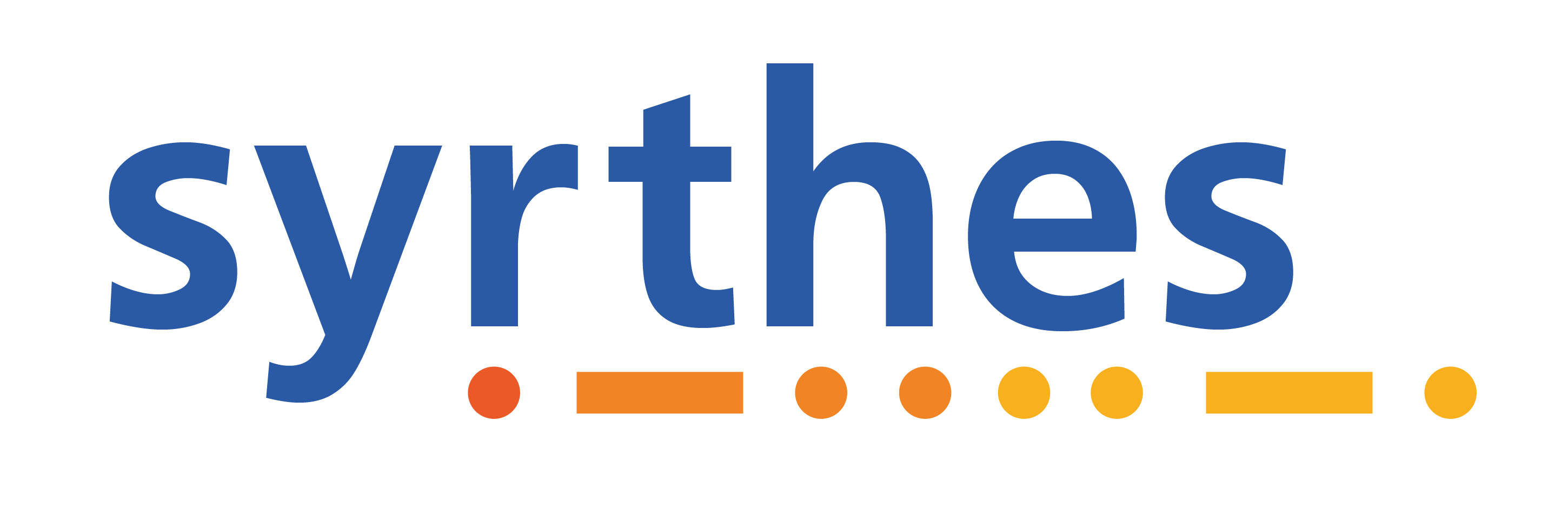
SYRTHES in 4 questions
What kind of software?
SYRTHES is a Software dedicated to transient thermal simulations in solids. It handles 2D and 3D conduction inside solids and wall to wall radiation heat transfert with non participating media. Coupled heat and mass transfer (evaporation and condensation) can also be handled. The code can be used in various domains: buildings components studies related to energy efficiency, nuclear (plant components, fuel transport, fuel transportation, waste management), electricity related problems, material physical properties, etc.
For whom?
Design and technical departments, research centers, engineering schools and universities.
What is it used for?
It is generally used to perform heat transfer studies inside components or devices, to ensure for example that thermal criteria are respected or to improve designs so that devices stay within expected specifications.
An example?
To investigate long term aging of electrical cables passing through a thick wall and heated by Joule effect, the temperature distribution needs to be calculated. The complex structure of each cable (core, cladding, …) is accounted for. This allows to have access to the maximum temperature reached in each cable affected by a certain load. This helps to gain a better understanding of the thermal behavior of a bundle of cables, ensure they stay within the required specifications and provide possible solutions to improve the spatial positioning of each electrical cable.
Downloads
Find here some associated documentation (can also be accessed directly through the GUI)
The last version of the code
Technical aspects
What kind of numerical approaches are used within the code ?
► Radiosity approach for thermal radiation
What kind of input is required by the code?
► Material physical properties
► Boundary conditions
► Temperature at probe locations
► Thermal energy balances
Detailed description
The SYRTHES Software is designed to solve transient thermal problems in 2D (cartesian and axisymetrical system of coordinates) and 3D. It is an open source code, meaning that users can use it both for classical studies thanks a Graphical User Interface, but can also program their own complex physical cases. It runs exclusively on Linux platform.
For conduction, all material properties, source term, or boundary conditions (fixed temperature, flux, heat exchange, contact resistance, infinite radiation, etc…) may vary with respect to space, time, or local quantities like the temperature. Conductivity of each material may have an isotropric, orthotropic or anisotropic behavior.
Wall to wall radiation (non-participating media), is also available in 2D, 2D axi-symetrical and 3D system of coordinates. A radiosity approach is used when the radiative behavior is diffuse. When calculating view factor (or Gebhart factors when wall have not a diffuse behavior any more) shadowing effects are automatically accounted for whatever the geometrical complexity of the case.
Coupled mass and heat transfer can also be used, inside porous materials, provided the users can specify the behavior of materials. Related applications can be found in buildings energy efficiency studies.
Multiphysics: SYRTHES has been and can be coupled or chained with many other codes. CFD code to perform conjugate heat transfer (Code_Saturne for one phase flow, NEPTUNE_CFD for two phase flow).
SYRTHES proposes a Graphical User Interface (GUI), to help user setting their cases. The SALOME plateform can be used to design the components CAD, and produce an adequate mesh. Once the calculation has ended, analysis of the thermal fields found can be done thanks to post-processing tools (either Ensight, or Paraview, but of course the structure of the result files being very simple and ASCII, each user can translate these results towards his own post-processor). Being open source, the range of applications is possibly very large. Indeed, the code can be used in a classical way but can also handle very complex configurations in which advanced users can modify some parts thanks to user functions, or even introduce new physics. Large configurations are not forgotten. SYRTHES being parallelized (thanks to message passing approach MPI), very large cases can be handled when running on large HPC clusters. Industrial cases up to 1.5 billion meshes have be handled on several hundreds of core.
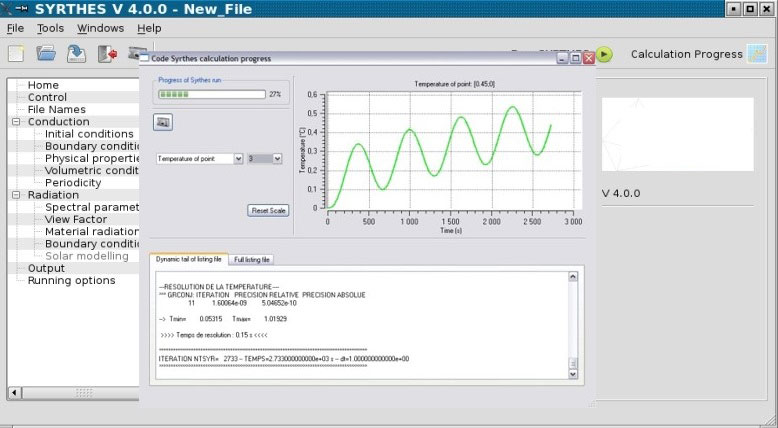
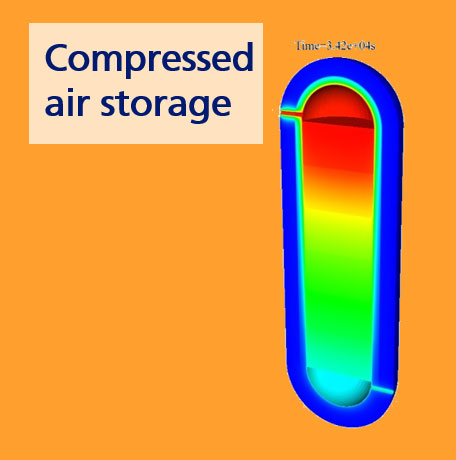
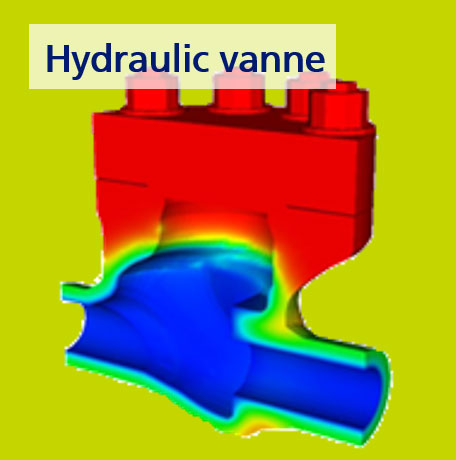
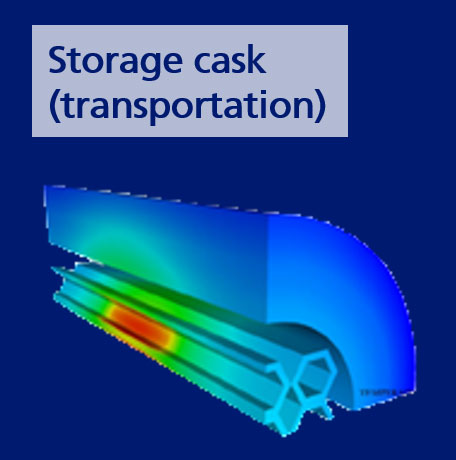

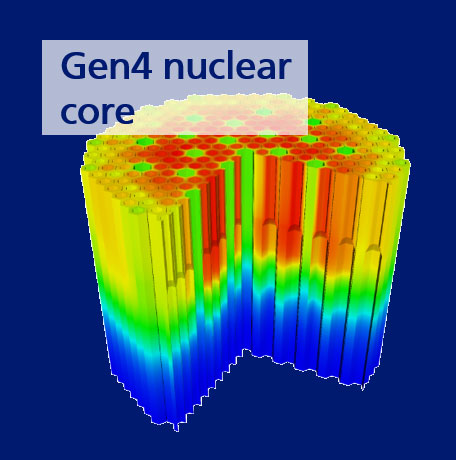
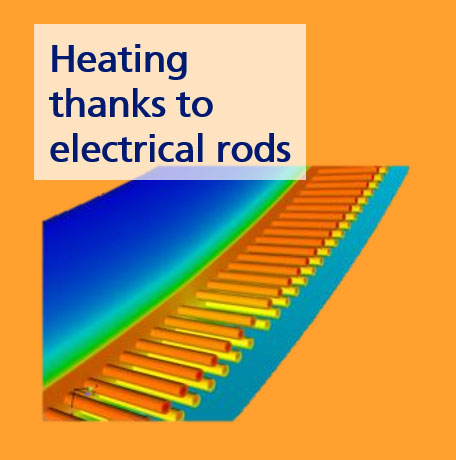
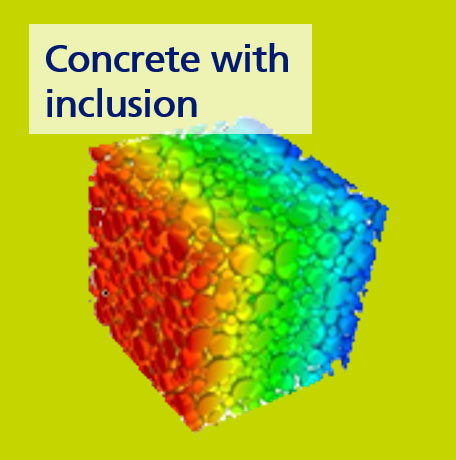
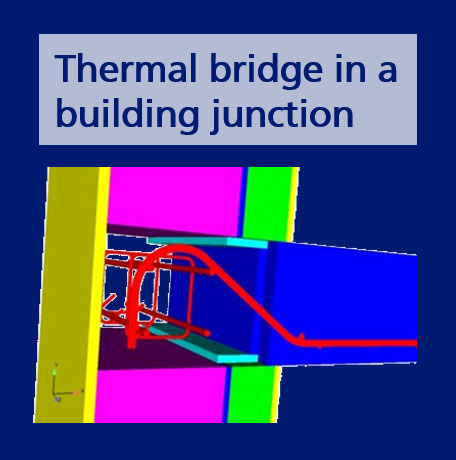
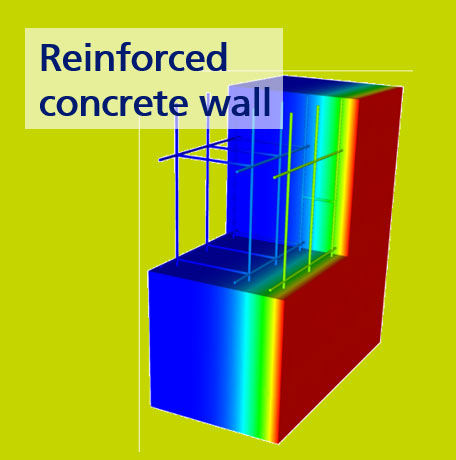
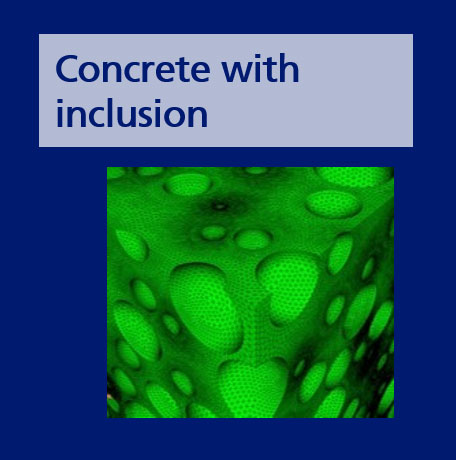
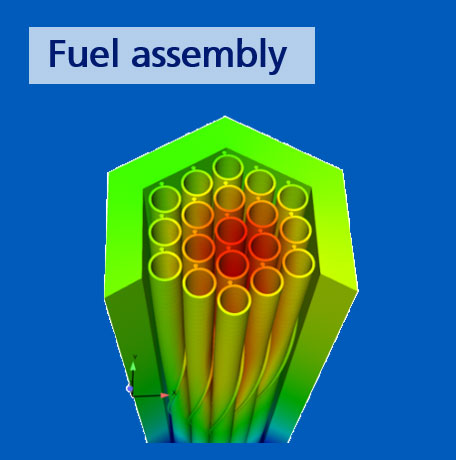
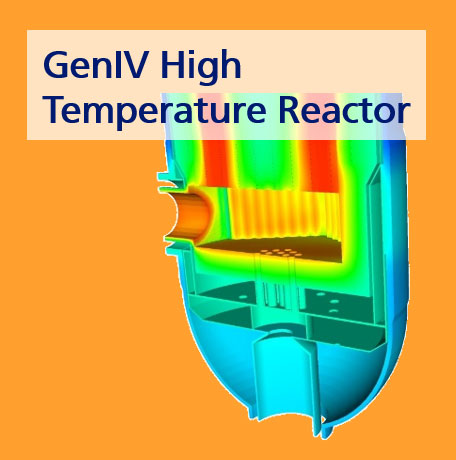

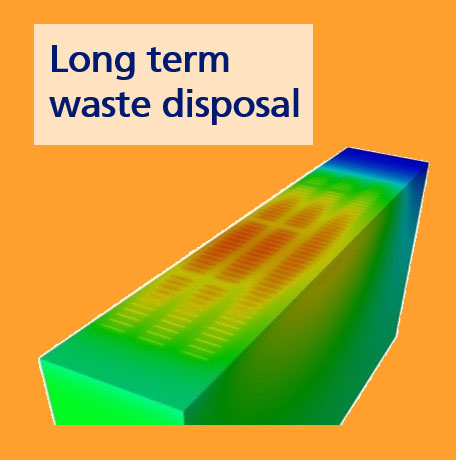
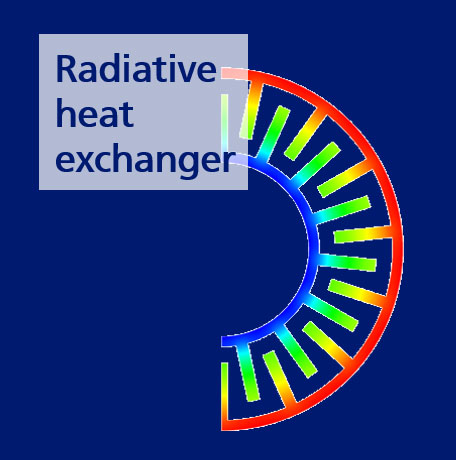
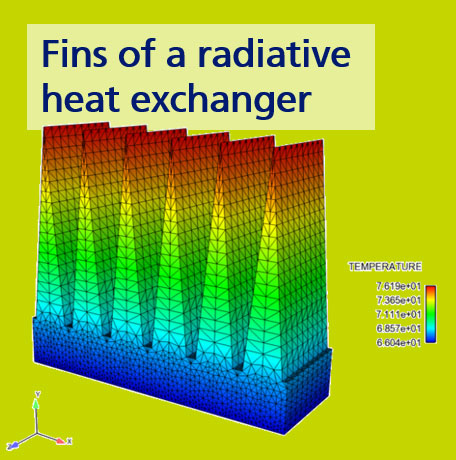
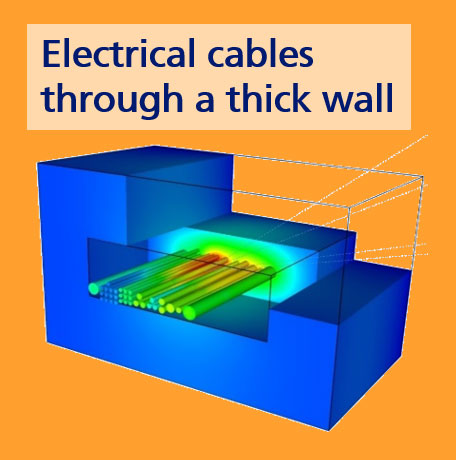
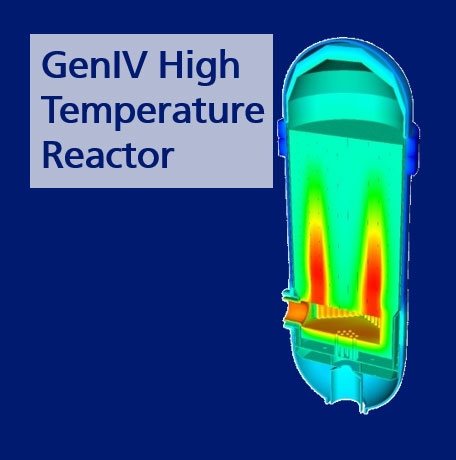
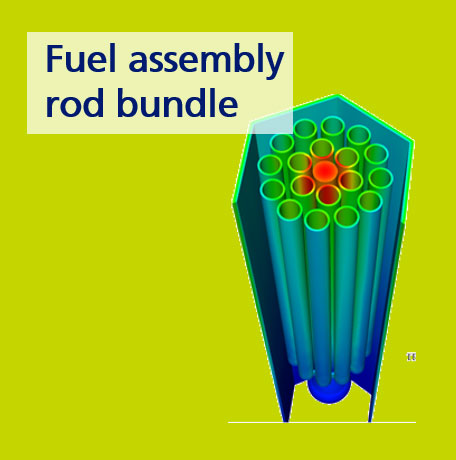
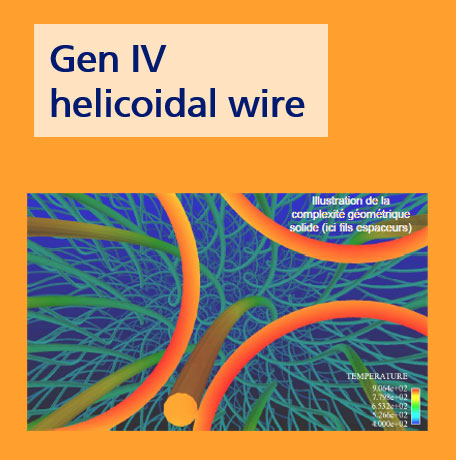
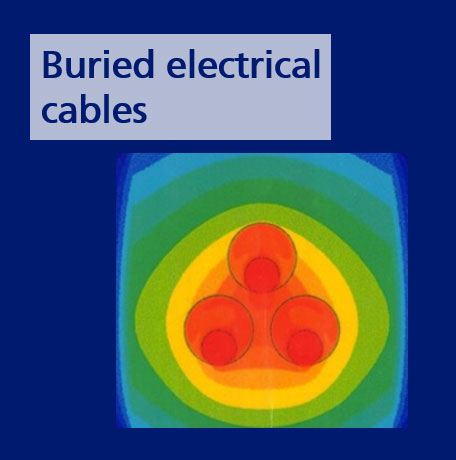
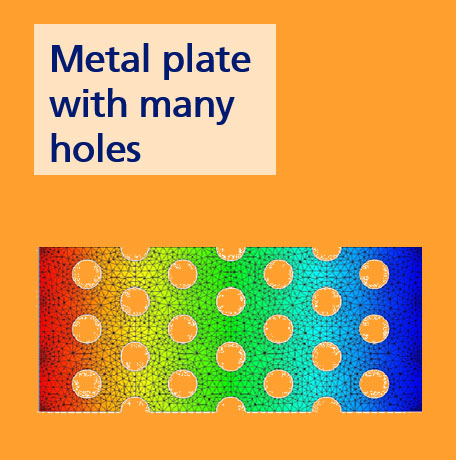
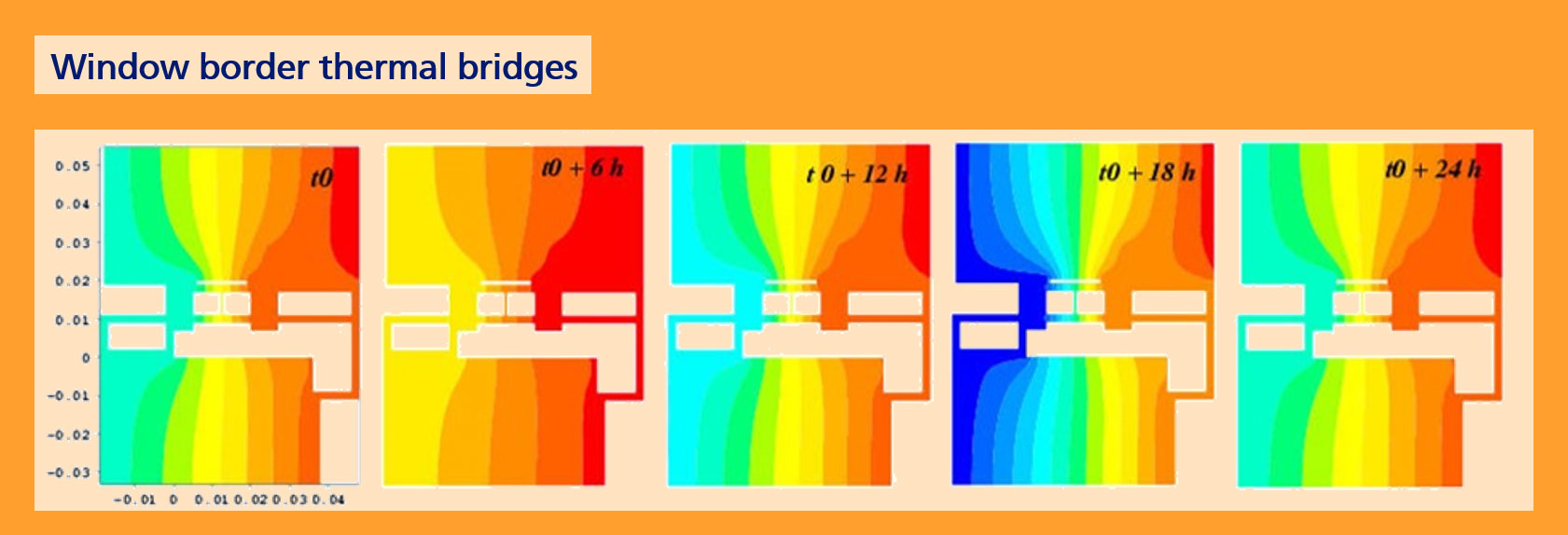
-
ConductionThermalRadiation
Software
Finite elements
References
C. Péniguel, J.M. Stephan, "Thermalhydraulic and mechanical behaviour of an elbow in presence of a stratified flow", Nureth 5, Salt Lake City, 1992
C. Péniguel, M. Hecker, "Thermal hydraulic study of a stratified flow in an elbow geometry – Model Super-Nimbus", Nureth 6, Grenoble, 1993
C. Péniguel, I. Rupp, "A Numerical Method for Thermally Coupled Fluid and Solid Problems. Numerical Methods in Thermal Problems", UK, Swansea, 1993
C. Péniguel, I. Rupp, "A Finite Element Approach to Simulate General Conduction Problems", 3rd International Conference Heat Tranfer. UK, Southampton,1994
C. Péniguel, I. Rupp, "A numerical Approach for Thermally Coupled Fluid and Solid Problems in complex geometries", 3rd International Conference Heat Tranfer ,UK, Southampton,1994
C. Péniguel, I. Rupp, "A numerical approach of coupled heat conduction and enclosure radiation problems", 8th FEMIF, Venise, Italy.1995
C. Péniguel, I. Rupp, "A Numerical approach of thermal problems coupling fluide solid and radiation in complex geometries", 8th FEMIF, Venise, Italy.1995
C. Péniguel, I. Rupp, "Coupling heat conduction and radiation phenomena in complex geometries", 10th Int Conference in Numerical Methods in Thermal Problems, Swansea 1997
C. Péniguel, I. Rupp,"Coupling conduction radiation and convection in complex 2D and 3D problems",10th Int Conference in Numerical Methods in Thermal Problems, Swansea 1997.
C. Péniguel, I. Rupp, "Couplage du code de thermique Syrthes et des codes de mécanique des fluides N3S et/ou ESTET", congrès SFT, Renardières, France, 1997
C. Péniguel, "Heat tranfer Simulation for industrial applications, needs, limitations and expectations", 2nd Int Conf on Heat and Mass Transfer, Delft, 1997
C. Péniguel, I. Rupp,"Coupling conduction radiation and convection using PVM", SaintVenant Symposium, Paris, 1997
C. Péniguel, C. Mallez "Numerical study of a thermal transient in a 900 Mwe Nozzle subjected to a severe thermal load", Nureth 8, Japan 1998
C. Péniguel, I. Rupp, "Modélisation de quelques aspects thermiques intéressant EDF à l’aide d’une approche numérique", Journées f2AS, Paris, 1999
C. Péniguel, I. Rupp , "Numerical approach of a coupled fluid-solid Thermal phenomena, (application to power plant piping systems)", PVP, Boston, 2000
Péniguel C. Sakiz M., Benhamadouche S. Stephan J.M. Vindeirinho C., "Presentation of a numerical 3D approach to tackle thermal stripping in a PWR Nuclear T-Junction", PVP 2003, Cleveland, 2003
S. Benhamadouche, M. Sakiz, C. Péniguel, J.M. Stephan, "Presentation of a new methodology of chained computations using instationnary 3D approaches for the determination of thermal fatigue in a T-junction of a PWR Nuclear Plant", Smirt 2003
J.M. Stephan, C. Péniguel, P. Genette, M. Sakiz, T. Pasutto, S. Sezaleniec, "Evaluation of thermal solicitations and stresses in pipings mixing zones", ASME PVP05 Conference Denver, 2005.
T. Passuto, C. Péniguel, M. Sakiz, "Chained computations using an unsteady 3D approach for the determination of thermal fatigue in a T-junction of a PWR nuclear plant", ASME PVP05 Denver, 2005
T. Passuto, C. Péniguel, M. Sakiz , "Chained computations using an unsteady 3D approach for the determination of thermal fatigue in a T-junction of a PWR nuclear plant", ICAPP 2005, Seoul, Corée
C. Péniguel, I. Rupp, N. Ligneau, M Tommy-martin, L. Beloeil, E. Lemaire, "Thermal analysis of a pwr core internal baffle structure". ASME PVP 2006, Vancouver
E. Lemaire, N. Ligneau, C. Péniguel, "Exemples de modifications et réparations sur les équipements internes de cuve", SFEN, Paris, 2005
T. Duforestel, D. De-Caqueray, C. Péniguel, I. Rupp, C. Ciucasu, J.B. Rieunier, G. Guilbert, J. Gilles, C. Pompeo, S. Kherrouf, "Confort d’été sous toiture, IPBSA", La reunion, 2006
C. Péniguel, I. Rupp, F. Archambeau, "Modélisation thermique tridimensionnelle fine d’un réacteur à gaz HTR", Société Française de thermique, Ile des Embiez, 2007
C. Péniguel, I. Rupp, F. Archambeau, "3D Thermal Simulation of Decay Heat Removal in a HTR Half Geometry", Proc ICAPP 2008, Anaheim, CA USA June 8-12
I. Rupp, C. Peniguel, "Large scale finite element thermal analysis of bolts of a french PWR core internal baffle structure", NUTHOS-7, Seoul, Korea, October 5-9, 2008
C. Garzenne, C. Péniguel, I. Rupp , S. Rih , “A finite elements based thermal model for the high level waste geological disposal”, GLOBAL 2009, Paris, France, Sep 6-11, 2009
C. Péniguel, I. Rupp, JP Juhel, S. Rolfo, M Guillaud, N. Gervais, "Three Dimensional Conjugated Heat Transfer Analysis in Sodium Fast Reactor Wire-Wraped Fuel Assembly", Proc ICAPP 2009, Tokyo, Japan, May 10-14
C. Péniguel, I. Rupp, C. Garzenne, M. Guillaud, "Analysis of High Level Waste Geological Disposal with the Finite Element and Radiosity Thermal Code SYRTHES", Proc GLOBAL 2009, Paris, France
I. Rupp, C. Péniguel, "Thermalhydraulic and Conjugate Heat Transfert Analysis of a 1300 MW PWR Core Internal Baffle Structure", ICAPP ‘10 San Diego, CA, USA, June 13-17, 2010
C. Péniguel, I. Rupp, JP Schneider, "Methodology for a Thermal Analysis of a Proposed SFR Transport Cask with the Thermal Code SYRTHES". Proc ICAPP 2010, San Diego, CA USA,
C. Péniguel, I. Rupp, S. Rolfo, M. Guillaud, "Thermal Hydraulics and Conjugate Heat Transfer Calculation in a Wire-Wrapped SFR Assembly", Proc ICAPP 2010, San Diego, CA, USA June 13-17
H. Leroyer, A. Ribes, J. Le Mer, C. Garzenne, C. Péniguel and I. Rupp, "A Calculation Scheme to Optimize the High-Level Waste GeologicalDisposal: an Application to a Transition Scenario from PWR to FR", GLOBAL 2011,Makuhari, Japan, Dec. 11-16, 2011
I. Rupp, C. Péniguel, H. Leroyer, M. Guillaud, "Thermal analysis of high level waste geological disposal module with the thermal code SYRTHES", ICONE 20 July 30 - August 3, 2012, Anaheim, California, USA
C. Péniguel, I. Rupp, S. Rolfo,D. Hermouet "Conjugate Heat Transfer Study of a Wire Spacer SFR Fuel Assembly thanks to the Thermal Code SYRTHES", Joint International Conference on Supercomputing in Nuclear Application and Monte Carlo 2013, La cite des sciences et de l’industrie, Paris, France, October 27-31, 2013
C. Péniguel, I. Rupp, D. Hermouet, "Conjugate Heat Transfer Study of a Wire Spacer SFR Fuel Assembly with the Thermal Code SYRTHES and the CFD Code Code_Saturne", Proc ICAPP 2014, Charlotte, USA, April 6-9
A. Bresson, M. Tommy-Martin, I. Rupp, F. Sefta, M.Kostal, E. Losa, Y. Mogami, Y. Takada, S. Ebalard, A. Janet, N. Chapoutier, C. Gosmain, "Heavy Reflector type EPR benchmarking", FONTEVRAUD 9, 17 – 20 September 2018, Avignon, France
S. Mimouni, C. Peniguel, "Modelling of sodium boiling flows with Neptune-CFD, CFD4NRS-8, 2020.
I. Rupp, JM. Bursi, "Delayed Ettringite Formation Thermal Management in Cement Grout for Long-Lived Intermediate-Level Radioactive Waste Conditioning", NUWCEM 2022 – France, Avignon – 2022, May 4-6
C. Péniguel, "Thermal Study of the Emergency Draining Tank of a Molten Salt Reactor", Proc ICAPP 2023, Gyeongiu, Korea, april 23-27
International Journal of Heat and Fluid Flow (1998): Heat Transfer Simulation for Industrial Applications.
International Journal of Numerical Methods for Heat and Fluid Flow (Vol 9), 1999: Coupling Heat conduction, Radiation and Convection in complex geometries.
Revue Générale de Nucléaire (2006):Exemples de modifications et réparations sur les équipements internes de cuve
Nuclear Engineering and Technology (Vol 38), 2006: Chained computations using an unsteady 3D approach for the determination of the thermal fatigue in a T-junction of a PWR nuclear plant.
International Journal of Heat and Mass Transfer 196, 2022, T. Duforestel, I. Oubrahim, R. Belarbi, H. El Hardouz, M. Colmet Daâge, "Assessment of the water vapor permeability: Effect of the total pressure"
Guest lectures
Péniguel C. : Heat transfer and lagrangien approach, Institute of Fluid-Flow Machinery , Gdansk, Poland
Péniguel C. : Ercoftac - Industrial point of view, Louvain, 2001
Péniguel C. : Heat tranfer Simulation for industrial applications, needs, limits and expectations, 2nd Int Conf on Heat and Mass Transfer, Delft, 1997
Péniguel C. : HTGR seminar – Hight temperature gas reactor simulations with Code_Saturne and Syrthes, Manchester, 2006

